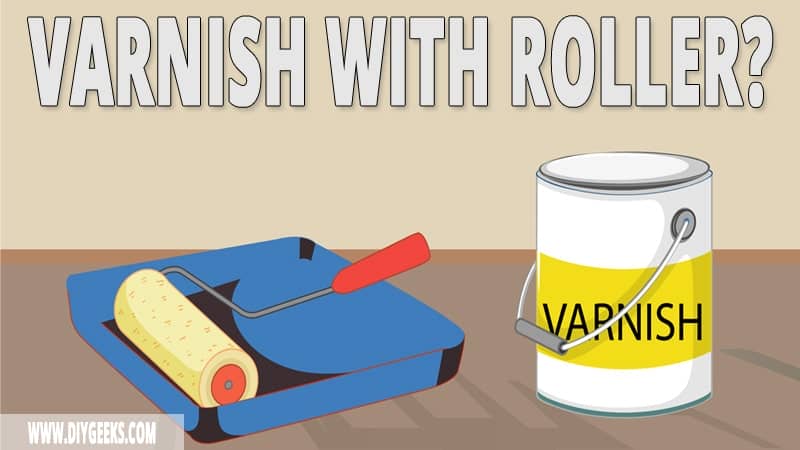Varnish is a topcoat that produces a glossy moisture-resistant coating over surfaces or paints and protects them from water, moisture, scratches, and other damage. So, can you apply varnish with a roller?
You can apply varnish with a non-foam paint roller. But, you must even out the finish with a bristled or foam paintbrush after using a paint roller.
How To Apply Varnish With A Roller?
To apply varnish with a roller, do the following things.
- Prep the Workspace.
- Clean and Sand the Surface.
- Apply the Varnish with a Roller.
1. Prep The Workspace
Prep the workspace by removing (or covering) nearby furniture and objects, and cover the floor with a drop sheet to prevent paint spills.
2. Clean and Sand the Surface
Clean the surface to remove dust, dirt, filth, and debris that can prevent varnish from adhering. Since varnish is transparent (colorless) it will highlight all imperfections, including dust and dirt, so cleaning the surface is necessary.
To clean the surface, use warm soapy water or Trisodium Phosphate (TSP). Simply damp a rag with warm soapy water and wipe the surface.
Sand the surface with fine-grit sandpaper (220-grit) to remove imperfections and bumps, and smoothen the surface.
3. Apply The Varnish With The Roller
Use a non-foam paint roller to apply 2-3 varnish coats. While applying the varnish use a “W” pattern for better coverage.
Wait until one coat dries before applying the next one. Water-based varnish takes around 6 hours to dry between coats, and oil-based varnish takes around 24 hours to dry for a re-coat.
While waiting for the varnish coat to dry, put the paint roller into a plastic bag and then into a fridge to keep the sealer wet and ready for the next coat.
Sand between varnish coats with extra fine-grit sandpaper (440-grit) to increase the adhesion between coats and get a smooth finish. Don’t sand the final varnish coat as you will remove the glossy and protective topcoat.
After applying the sealer, use a bristled or foam paint brush to even out the finish.
[su_youtube url=”https://www.youtube.com/watch?v=9LPpK5wnoPc”]
[sc name=”varnishroller”]


